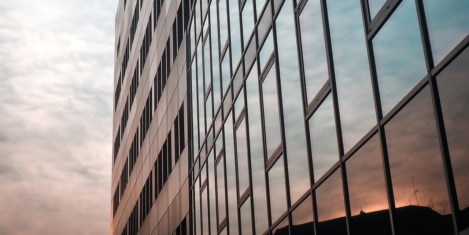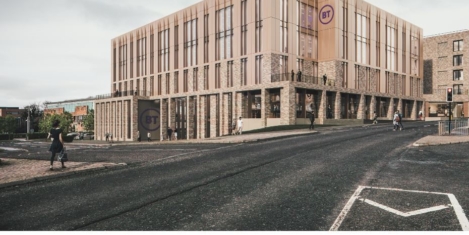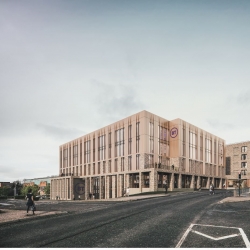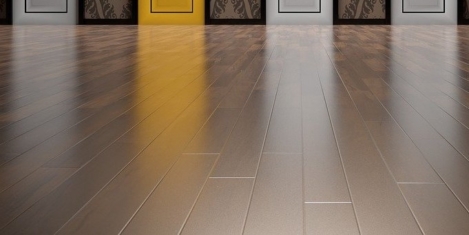To provide the best experiences, we use technologies like cookies to store and/or access device information. Consenting to these technologies will allow us to process data such as browsing behaviour or unique IDs on this site. Not consenting or withdrawing consent, may adversely affect certain features and functions.
The technical storage or access is strictly necessary for the legitimate purpose of enabling the use of a specific service explicitly requested by the subscriber or user, or for the sole purpose of carrying out the transmission of a communication over an electronic communications network.
The technical storage or access is necessary for the legitimate purpose of storing preferences that are not requested by the subscriber or user.
The technical storage or access that is used exclusively for statistical purposes.
The technical storage or access that is used exclusively for anonymous statistical purposes. Without a subpoena, voluntary compliance on the part of your Internet Service Provider, or additional records from a third party, information stored or retrieved for this purpose alone cannot usually be used to identify you.
The technical storage or access is required to create user profiles to send advertising, or to track the user on a website or across several websites for similar marketing purposes.
 More than half of respondents agree conditions are consistent with an upturn, according to the Royal Institution of Chartered Surveyors, RICS’ latest commercial property market survey. In the second quarter, 56 percent of survey participants predicted a recovery compared with 38 percent of respondents from January to March. (more…)
More than half of respondents agree conditions are consistent with an upturn, according to the Royal Institution of Chartered Surveyors, RICS’ latest commercial property market survey. In the second quarter, 56 percent of survey participants predicted a recovery compared with 38 percent of respondents from January to March. (more…)








 There has been a further improvement in sentiment across the global corporate real estate market, according to the latest
There has been a further improvement in sentiment across the global corporate real estate market, according to the latest 
 Throughout the pandemic many workplaces have offered their employees more flexibility. Flexible working options such as adjusting hours, days, or place of work, are attractive to many employees.
Throughout the pandemic many workplaces have offered their employees more flexibility. Flexible working options such as adjusting hours, days, or place of work, are attractive to many employees. 
 Employers should be doing more to encourage staff to start commuting into the office by bicycle, suggests research from
Employers should be doing more to encourage staff to start commuting into the office by bicycle, suggests research from 
 The removal of most Covid restrictions in the UK has increased calls for clearer practical guidance and the setting of specific indoor air quality (IAQ) contaminant targets to support the health and wellbeing of building occupants. The Building Engineering Services Association (BESA) has, therefore, produced a concise guide to good practice:
The removal of most Covid restrictions in the UK has increased calls for clearer practical guidance and the setting of specific indoor air quality (IAQ) contaminant targets to support the health and wellbeing of building occupants. The Building Engineering Services Association (BESA) has, therefore, produced a concise guide to good practice: 
 Technology is now integral for short and long-term employee wellbeing following the dramatic changes to working life caused by the COVID-19 pandemic, according to Thomas Woods, Vice-President of Enterprise for
Technology is now integral for short and long-term employee wellbeing following the dramatic changes to working life caused by the COVID-19 pandemic, according to Thomas Woods, Vice-President of Enterprise for 
 After more than a year of remote working, the majority of UK workers are well-versed in office-free employment. We’ve had plenty of time to think about how the experience has affected our working habits.
After more than a year of remote working, the majority of UK workers are well-versed in office-free employment. We’ve had plenty of time to think about how the experience has affected our working habits. 
 The situation across the world is at hugely differing stages with regards to the Covid pandemic. Many employees have been abroad throughout the pandemic and more will now be going overseas as lockdown in the UK eases.
The situation across the world is at hugely differing stages with regards to the Covid pandemic. Many employees have been abroad throughout the pandemic and more will now be going overseas as lockdown in the UK eases.
 As SMEs emerge from the pandemic and with further changes to restrictions, it seems they have another challenge to face – the refreshed interest in and demand from employees to work in a company that meets their wellbeing needs, according to
As SMEs emerge from the pandemic and with further changes to restrictions, it seems they have another challenge to face – the refreshed interest in and demand from employees to work in a company that meets their wellbeing needs, according to 


 IPSE (the Association of Independent Professionals and the Self-Employed) has responded to the UK Labour Party’s proposal for a single worker status saying that although it is welcome the party is attempting to clear the confusion around worker rights, the party’s proposals fail to grasp the nettle of employment status. The comment comes after Labour announced it would create a single worker status to “replace the three existing employment categories” of employee, worker and dependent contractor. Labour said the category would encompass “all but the genuinely self-employed”.
IPSE (the Association of Independent Professionals and the Self-Employed) has responded to the UK Labour Party’s proposal for a single worker status saying that although it is welcome the party is attempting to clear the confusion around worker rights, the party’s proposals fail to grasp the nettle of employment status. The comment comes after Labour announced it would create a single worker status to “replace the three existing employment categories” of employee, worker and dependent contractor. Labour said the category would encompass “all but the genuinely self-employed”. 






